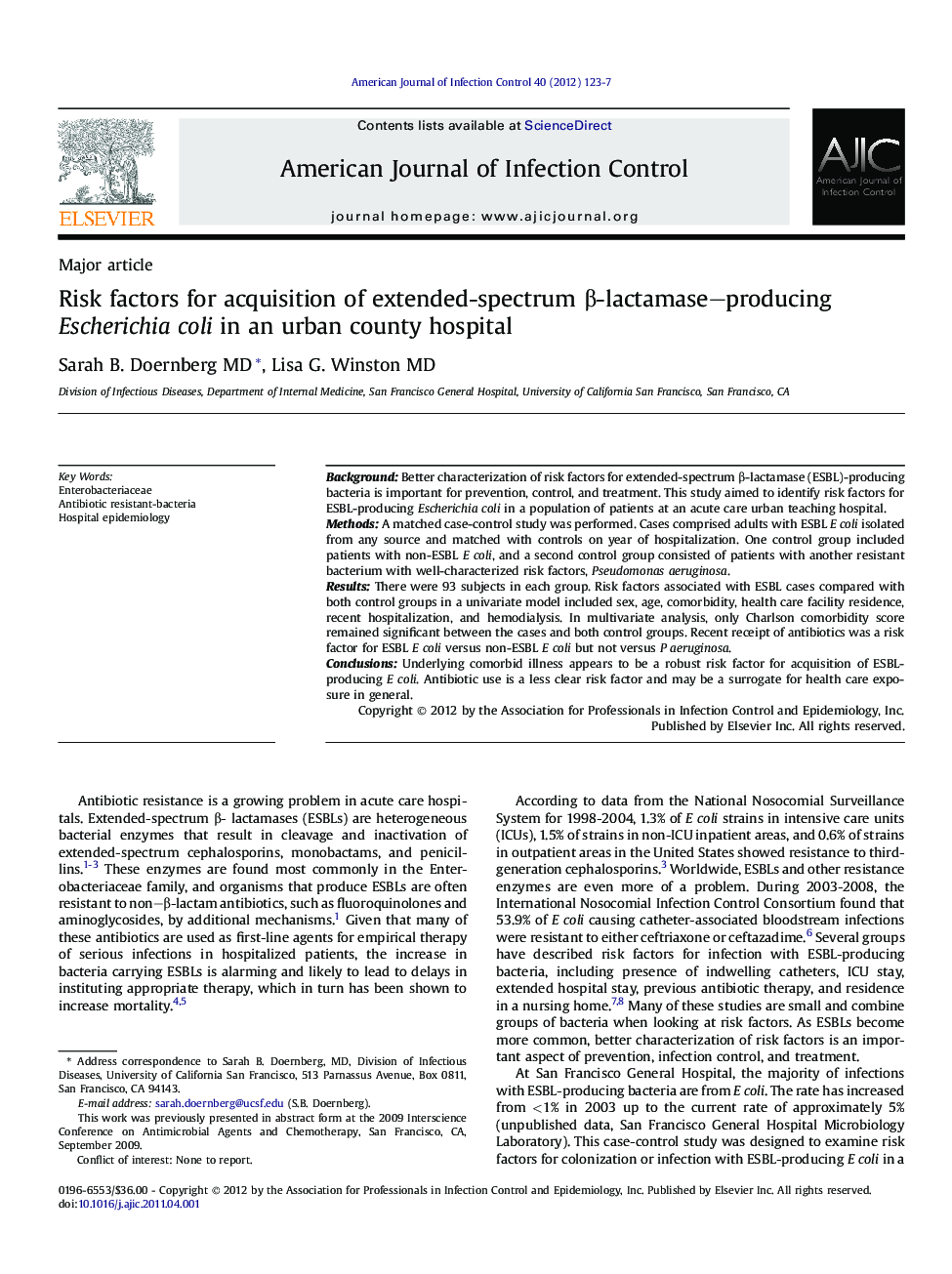| Article ID | Journal | Published Year | Pages | File Type |
|---|---|---|---|---|
| 2638119 | American Journal of Infection Control | 2012 | 5 Pages |
BackgroundBetter characterization of risk factors for extended-spectrum β-lactamase (ESBL)-producing bacteria is important for prevention, control, and treatment. This study aimed to identify risk factors for ESBL-producing Escherichia coli in a population of patients at an acute care urban teaching hospital.MethodsA matched case-control study was performed. Cases comprised adults with ESBL E coli isolated from any source and matched with controls on year of hospitalization. One control group included patients with non-ESBL E coli, and a second control group consisted of patients with another resistant bacterium with well-characterized risk factors, Pseudomonas aeruginosa.ResultsThere were 93 subjects in each group. Risk factors associated with ESBL cases compared with both control groups in a univariate model included sex, age, comorbidity, health care facility residence, recent hospitalization, and hemodialysis. In multivariate analysis, only Charlson comorbidity score remained significant between the cases and both control groups. Recent receipt of antibiotics was a risk factor for ESBL E coli versus non-ESBL E coli but not versus P aeruginosa.ConclusionsUnderlying comorbid illness appears to be a robust risk factor for acquisition of ESBL-producing E coli. Antibiotic use is a less clear risk factor and may be a surrogate for health care exposure in general.
